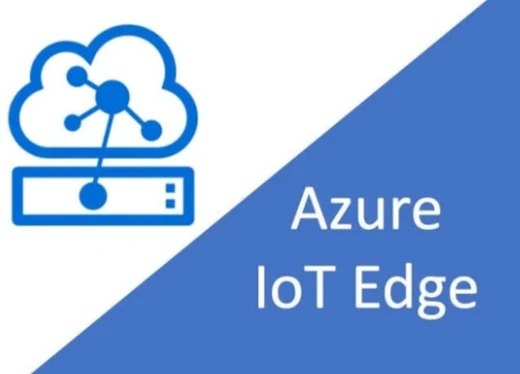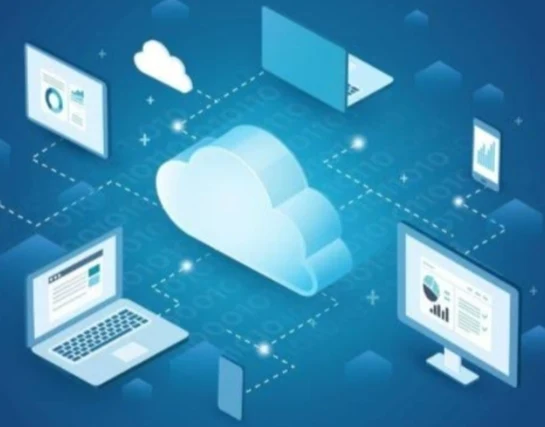Azure IoT Edge Technology Bring intelligence to the edge of your network
Azure IoT Edge Technology: A Closer Look
Azure IoT Edge is a powerful technology that extends the capabilities of cloud computing to the edge of your network.
Key Components of Azure IoT Edge
- IoT Edge Runtime: This is the core of Azure IoT Edge.
4 It's installed on your IoT devices and manages the lifecycle of deployed modules.5 It provides a secure and reliable environment for running your edge workloads. - IoT Edge Modules: These are containers that encapsulate your code or services.
6 They can be deployed to any IoT Edge device and run independently.7 - Cloud Interface: This provides a way to monitor and manage your IoT Edge devices remotely from the cloud.
8 You can deploy modules, update configurations, and monitor device health from a central location.
Common Use Cases for Azure IoT Edge
- Industrial IoT: Monitoring and controlling industrial equipment, such as sensors, machines, and robots.
14 - Retail: Analyzing customer behavior and optimizing inventory management.
15 - Smart Cities: Monitoring traffic, pollution, and other environmental factors.
16 - Autonomous Vehicles: Processing sensor data and making real-time decisions.
17
In essence, Azure IoT Edge empowers you to build intelligent and responsive IoT solutions by bringing the power of cloud computing to the edge of your network.
Azure IoT Edge is an intelligent device gateway that brings cloud intelligence to the edge of your network.
In the era of the Internet of Things (IoT), where billions of devices are connected and generating data, it's no longer practical or efficient to send all that data to the cloud for processing. This is where Azure IoT Edge comes in.
It allows you to run Azure services and custom logic on your devices, enabling you to pre-process data, make decisions, and take actions locally, without having to send everything to the cloud.
Benefits of using Azure IoT Edge
- Reduced latency and improved responsiveness: By processing data locally, you can reduce the time it takes to make decisions and take actions, which is critical for applications like industrial automation and remote monitoring.
- Reduced bandwidth costs: By pre-processing data at the edge, you can send less data to the cloud, which can save you money on bandwidth costs.
- Improved security and privacy: You can keep sensitive data from being sent to the cloud by processing it locally.
- Increased operational efficiency: You can automate tasks and make decisions at the edge, which can free up your staff to focus on other things.
Azure IoT Edge architecture
Azure IoT Edge consists of three main components:
- The IoT Edge device: This is the device that runs Azure IoT Edge runtime. It can be anything from a small microcontroller to a powerful industrial computer.
- The IoT Edge runtime: This is the software that runs on the device and manages the deployment and execution of Azure services and modules.
- The Azure IoT Hub: This is the cloud service that connects your IoT Edge devices to the cloud.
How to use Azure IoT Edge
There are a few different ways to use Azure IoT Edge:
- Deploy Azure services to the edge: You can deploy Azure services, such as Azure Machine Learning or Azure Stream Analytics, to your devices. This allows you to run advanced analytics and machine learning on your data at the edge.
- Develop and deploy custom modules: You can develop your own custom modules to run on your devices. This gives you complete flexibility to implement the logic you need for your specific application.
- Use pre-built modules from Azure Marketplace: There are a variety of pre-built modules available in Azure Marketplace that you can use to add functionality to your devices.
Azure IoT Edge is a powerful tool that can help you bring intelligence to the edge of your network and improve the performance, security, and efficiency of your IoT applications.
Real-World Examples of Azure IoT Edge in Action
Azure IoT Edge isn't just theoretical; it's powering innovative solutions across various industries.
Here are a few real-world projects showcasing its capabilities:
1. Predictive Maintenance in Wind Farms: Vestas, a leading wind turbine manufacturer, uses Azure IoT Edge to analyze sensor data directly on wind turbines. This allows them to predict potential failures and schedule maintenance before they happen, saving costs and increasing uptime.
2. Intelligent Retail Stores: Carrefour, a global retail giant, leverages Azure IoT Edge to optimize shelf inventory management in their stores. Edge devices analyze foot traffic and product interactions to automatically predict demand and trigger re-stocking, reducing out-of-stock situations and improving customer satisfaction.
3. Smart Agriculture: SVG Agrar Innovation, an Austrian agricultural company, uses Azure IoT Edge for field-level analytics in precision agriculture. Edge devices analyze soil moisture, temperature, and other environmental factors to guide irrigation and fertilization, optimizing resource usage and crop yields.
4. Connected Healthcare: St. Jude Medical uses Azure IoT Edge to manage their remote cardiac monitors. The edge devices pre-process patient data locally, sending only critical alerts to the cloud, resulting in faster response times and improved patient care.
5. Enhanced Maritime Operations: Royal Dutch Shell deploys Azure IoT Edge on tankers to optimize fuel consumption and engine performance. Edge devices analyze engine data in real-time, providing insights for captains to make informed decisions and reduce fuel costs.
These are just a few examples, and the possibilities are endless. Azure IoT Edge is enabling:
- Real-time insights and actions: Making decisions closer to the data source for faster response times and improved efficiency.
- Reduced reliance on cloud connectivity: Processing data locally even when offline, ensuring continuous operation.
- Scalability and flexibility: Deploying customized logic and edge services on diverse devices across industries.
Remember, Azure IoT Edge is a powerful tool, not just a technology. To make the most of it, consider:
- Identifying specific edge computing needs of your project.
- Evaluating device capabilities and network constraints.
- Developing custom modules or leveraging pre-built solutions.
- Integrating with existing cloud infrastructure and data pipelines.
By taking these factors into account, you can unlock the true potential of Azure IoT Edge and transform your business with powerful edge intelligence.
Project Name: Smart Factory Predictive Maintenance
Project Overview
This project aims to implement a predictive maintenance system for a manufacturing facility using Azure IoT Edge. The system will monitor real-time sensor data from machines on the factory floor, analyze the data using machine learning models deployed on the edge, and predict potential equipment failures before they occur. This proactive approach will help minimize downtime, reduce maintenance costs, and improve overall production efficiency.
Project Components
- IoT Edge Gateway: A physical device (e.g., a Raspberry Pi or industrial gateway) running the Azure IoT Edge runtime.
- Sensor Devices: Various sensors (e.g., temperature, vibration, pressure) connected to the IoT Edge gateway, collecting real-time data from machines.
- Machine Learning Model: A pre-trained machine learning model (e.g., a neural network) deployed as an Azure IoT Edge module. The model analyzes sensor data and predicts the likelihood of equipment failure.
- Azure IoT Hub: A cloud service that acts as a central message hub for bidirectional communication between IoT devices and cloud applications.
- Azure Stream Analytics: A cloud service that processes real-time data streams from IoT Hub, enabling complex event processing and alerting.
- Azure Machine Learning: A cloud service for building, training, and deploying machine learning models.
Project Workflow
- Data Collection: Sensor devices collect real-time data from machines and send it to the IoT Edge gateway.
- Edge Processing: The IoT Edge gateway receives sensor data and forwards it to the deployed machine learning model.
- Prediction: The machine learning model analyzes the data and generates predictions about the likelihood of equipment failure.
- Alerting: The IoT Edge gateway sends the predictions to Azure IoT Hub.
- Stream Analytics: Azure Stream Analytics processes the data stream from IoT Hub, filtering and aggregating data as needed.
- Alerting and Visualization: Stream Analytics triggers alerts (e.g., email, SMS) based on predefined thresholds and sends data to a visualization dashboard for monitoring and analysis.
Benefits of Using Azure IoT Edge
- Reduced Latency: Edge computing allows for real-time analysis and decision-making, minimizing the impact of network latency.
- Improved Reliability: Edge devices can operate independently even in the absence of a stable network connection.
- Enhanced Security: Data processing and analysis occur on the edge, reducing the amount of sensitive data that needs to be transmitted to the cloud.
- Cost Savings: Edge computing can reduce bandwidth usage and cloud storage costs by processing data locally.
Additional Considerations
- Data Security: Implementing robust security measures to protect sensitive data both on the edge and in the cloud.
- Scalability: Designing the system to handle a growing number of devices and data streams.
- Maintenance: Regularly updating and maintaining the IoT Edge gateway, modules, and machine learning models.
This is just one example of a real-world project using Azure IoT Edge. The specific implementation details will vary depending on the industry, use case, and desired outcomes.



